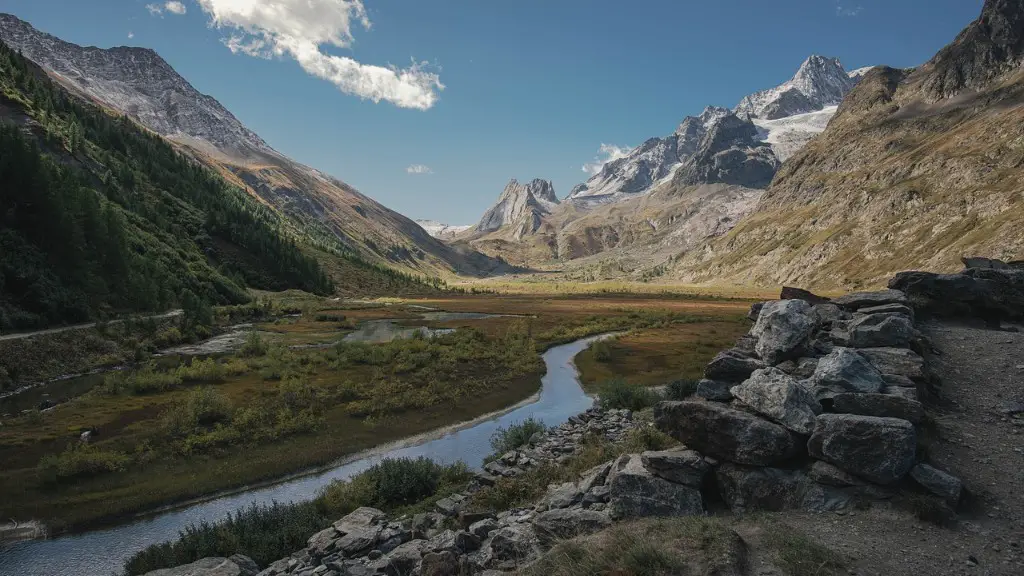Pollution
The Mississippi River is the second-longest river in the United States and its basin is the largest in North America. Unfortunately, this basin is also threatened by different types of pollution due to the rapid industrial, agricultural and urban development which has taken place in its area of influence. When it comes to water pollution, Mississippi River is definitely one of the most threatened rivers in the United States.
On the one hand, urban runoff and agricultural wastes from fertilizers and manure used as crop soil boosters contribute to the degradation of water quality of the Mississippi River. These sources of pollution are capable of making the river water toxic for aquatic beings, causing them serious harm.
On the other hand, oil and shipment spills are also important sources of pollution in this area. Just to give an example, the Deepwater Horizon spill in 2010 released an estimated 6.3 million barrels of oil into the Gulf of Mexico, an important basin of the Mississippi River which has seen its waters polluted by petroleum products.
When sewage, agricultural and industrial wastes find their way into the river, they also contribute to its destruction by introducing chemicals like mercury and polychlorinated biphenyls (PCBs) into the water, which can contaminate fish, shellfish and other species, thus making them unfit for human consumption.
Finally, climate change and sea level rise are also contributing to the destruction of the Mississippi River in manifold ways. For starters, climate change worsens extreme weather events weakening the water table ability of retaining its natural levels during years of low rainfall. It is estimated that when this river’s flow diminishes its saltwater intrusion increases, thus making its waters less drinkable and can result in the disappearances of fish species.
Industrialisation
Industrial activities are another factor of concern for the Mississippi River. There are more than 6,000 barges carrying over 500 million tons of products each year in this area, resulting in increasing amounts of pollutants being discharged in its waters. Many of these pollutants come from the burning of fossil fuels and petrol, creating emissions like sulfur dioxide which causes acid rain.
In addition to that, many industrial activities also require significant amounts of water, thus causing water extraction from the river and its tributaries which can have significant impacts on the river’s flow. This water extraction can cause the river to alter its course, change its elevation, make some areas dry and, more generally, lead to its degradation over time.
Deforestation is another important industrial activity that affects the Mississippi River in many ways. This is because trees are very important for water absorption and their cutting efforts can cause the river to swell and reduce its retention during times of drought, or accelerate soil erosion or intense flooding when it rains heavily.
The consequences of such industrial activities are catastrophic for the environment and the river’s habitants. For instance, sediment transport from the deforestation of areas in the river basin raises water temperatures, lowers the oxygen levels and consequently affects the habitat of aquatic species.
Oil spills
Oil spills in the Mississippi, just like in many other rivers are a major source of pollution. They are caused by tanker ship collisions, tankers overloading and the like. Accidental spills could create a considerable number of acute and long-term problems in the area, as they contain organochlorine compounds, metals and nutrients.
For starters, oil spills could have a negative impact on coastal habitats, as they cause a decrease in oxygen levels and can also lead to the death of aquatic species, as they are common toxicants. Additionally, the spent oil could reduce fisheries yields, reduce marine habitat, degrade water quality and beaches, and require a major amount of money for the clean-up.
Moreover, the toxicity of spilled oil is obviously not limited to the river area. On the contrary, this kind of spills is more than likely to cause serious health issues, and even death, when people come into contact with it. Long-term contact with this type of pollutants can have a variety of short-term and long-term health effects, including neurological and cardiovascular problems.
Furthermore, apart from having adverse impacts on human health, oil spills can also have a negative psychological toll on people living in or near the affected areas, by inducing a feeling of helplessness and powerlessness and inducing major inconveniences for local communities.
Research
In order to tackle and combat the threats to the Mississippi River, proper research on its health is required. Only in-depth studies of the threats and their effects will help us address the hazards that this river is facing. Furthermore, the government needs to invest in infrastructure projects and research to understand how to protect the Mississippi River and its surroundings.
In this respect, many research programs have already been set in motion to study the influencing factors that are leading to the degradation of the river. For instance, The US Geological Survey has conducted research to study the fate and transport of pollutants, refining data models and providing management tools that can help the government take action.
Furthermore, many universities are also investing in research to study the impacts of the pollutants caused by industrial and agricultural activities on the river’s water quality. A good example of this is the Aquatic Ecosystem Health and Management Society’s Mississippi River Research Consortium, which brings together researchers and professionals from all over the country in an effort to protect and understand the river’s ecosystem.
Apart from research, there are also many efforts from non-governmental organisations and independent experts to increase public awareness about the threats of pollutants to the river. They are using the internet, awareness campaigns and grassroots actions in order to educate people about the dangers of water pollution and the importance of preserving the Mississippi River for future generations.
Solutions
Currently, there are many potential solutions to combat the threats that the Mississippi River is facing. On the one hand, governments should lead the way by introducing more stringent regulations on industries and farming activities that are taking place near the river. Moreover, they should also take action in order to enforce water pollution laws and to make sure that waste management procedures are properly followed.
Apart from that, citizens should also be encouraged to be more conscious about the impact that their day-to-day activities have on water quality. This can be done by educating people about the importance of water conservation, reducing water pollution and using environmentally friendly products. Moreover, citizens should also be encouraged to join in initiatives and movements that defend the river and its habitats.
Finally, technological solutions should also come into play. For instance, the implementation of sensors in different areas of the river and its tributaries could help gather more reliable data that can be used to track and monitor water quality. New technology can also be used to filter and clean polluted water, as well as to reduce emissions and waste.
Health hazards
The contamination of the Mississippi River poses a direct threat to the health of the local population. Fresh water is a public health staple, critical for drinking, hygiene, health, and socio-economic development. This is why any kind of pollution can bring severe health hazards.
When it comes to the Mississippi River, people can be exposed to a wide range of bacteria and viruses which can cause annoying to serious illnesses. For instance, many of the pollutants that are coming from mines and constructions in the river’s basin can increase the risk of developing skin problems, allergies and heart problems, as well as having an effect in neurological, respiratory and immune system functions.
In addition to that, coming into contact with the water of the contaminated Mississippi River can cause gastrointestinal illnesses, which can lead to more severe health conditions and even fatalities. The vulnerable groups of the population, such as young children, pregnant women, elderly citizens and people who suffer from chronic diseases can be especially vulnerable.
Moreover, the Mississippi River is becoming an increasingly popular recreational destination and water activities can put one’s health at risk. Recent studies have shown that contact with contaminated waters can result in rashes, skin irritation, nausea, and other acute health symptoms.
When it comes to hazardous material spills, studies found that river waters within 5 km downstream from the point of the spill can become highly unsafe for human contact. Thus, people should be very careful when swimming and playing near the Mississippi River and inform themselves about the quality of its water before doing any outdoor activity.
Conclusion
The Mississippi River is of utmost importance, both economically and ecologically. Its pollutants, sediments and hazardous materials can have enormous consequences on human health, the local wildlife and ecosystems. The river’s health is of paramount importance and it is the responsibility of all of us to protect it. Otherwise, we might be facing serious long-term consequences.





